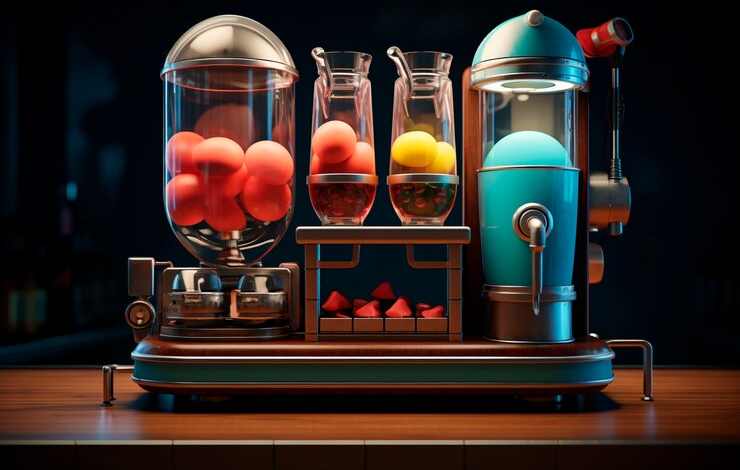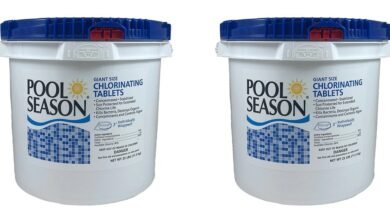
The food and beverage industry has experienced a remarkable transformation in recent years, with digital technologies taking center stage. Among these, 3D product animation has emerged as a powerful tool for brands to engage their customers, enhance product visualization, and drive sales. In an industry where presentation, texture, and realism are paramount, 3D product animation plays a vital role in bridging the gap between imagination and reality. The latest trends in this technology not only showcase products in stunning detail but also contribute to brand storytelling and market differentiation.
In this blog, we will explore the key trends in 3D product animation within the food and beverage sector, delving into the innovative uses of animation, emerging technologies, and how businesses are leveraging these trends to create compelling visual narratives. Additionally, we will highlight how 3D product animation services have expanded into areas like 3D animated logos, which are increasingly popular among food and beverage companies looking to establish a unique brand identity.
1. Hyper-Realistic Textures and Materials
One of the standout trends in 3D product animation for the food and beverage industry is the emphasis on hyper-realism. Consumers today demand authenticity, especially when it comes to food. Animators use advanced rendering techniques to create 3D models that replicate the look and feel of real-world materials, such as the gloss of a chocolate bar, the fizz of a soda, or the texture of a loaf of bread.
These hyper-realistic animations are crucial in helping customers visualize a product as they would encounter it in a physical store. By providing an immersive, true-to-life experience, brands can build trust with consumers, giving them confidence in their purchasing decisions. For instance, animated 3D product demos of beverages, such as a glass of soda with detailed bubbles and condensation, offer a sensory-rich experience that static images cannot provide.
2. Interactive 3D Product Animations
Interactivity is a growing trend in 3D product animation, particularly in the e-commerce and marketing strategies of food and beverage brands. Companies are now offering consumers the ability to interact with animated 3D models of their products. For example, potential customers can rotate a 3D bottle of wine, zoom in to examine the label, or even see a virtual pouring demonstration.
This interactive experience enhances engagement and allows consumers to explore products in greater depth. For brands, it offers a chance to highlight unique selling points, such as the packaging design or specific product features. By incorporating interactive 3D product animation services, companies in the food and beverage industry can create memorable experiences that keep their customers coming back.
3. Storytelling Through 3D Animated Logos
As branding becomes increasingly important in the crowded food and beverage market, companies are turning to 3D animated logos to leave a lasting impression. A 3D animated logo can convey a brand’s essence in seconds, using visual effects, motion, and sound to communicate core values and identity. For instance, a coffee brand might animate their logo by showing coffee beans falling and transforming into a cup of steaming coffee.
This trend taps into the need for dynamic and visually engaging branding in the digital era. A static logo may no longer suffice in capturing the attention of today’s fast-paced audience. A 3D animated logo can be integrated across multiple platforms, including websites, social media, and advertisements, ensuring brand consistency while providing a more engaging experience.
Additionally, 3D animated logos offer versatility in storytelling. They can evolve over time to reflect new campaigns or seasonal offerings, keeping the brand fresh and relevant. This makes the investment in a 3D animated logo a cost-effective strategy, as it can be used in a variety of contexts to maintain brand visibility.
4. Augmented Reality (AR) Integration
Another exciting trend in 3D product animation for the food and beverage industry is the integration of augmented reality (AR). AR allows brands to merge real-world environments with 3D animations, providing an interactive and immersive experience for consumers. This technology is particularly popular in product packaging and marketing campaigns.
For example, a consumer could scan the packaging of a snack product with their smartphone, triggering a 3D animation that provides product information, recipes, or a behind-the-scenes look at how the product was made. This integration of AR with 3D product animation services not only engages customers but also provides them with additional value, increasing the likelihood of repeat purchases.
Brands that incorporate AR into their packaging are also more likely to stand out on the shelves, offering a unique selling point that distinguishes them from competitors. As AR becomes more widely adopted, its fusion with 3D animation will continue to create innovative marketing opportunities for food and beverage companies.
5. Motion Graphics for Product Narratives
Motion graphics, combined with 3D product animation, are being used extensively to tell compelling product narratives. In the food and beverage industry, where product differentiation is key, brands are using 3D animation to create visual stories that resonate with their audience. Whether it’s showing the journey of a product from farm to table or explaining the ingredients and nutritional benefits, motion graphics can simplify complex information in an engaging way.
For example, a health-conscious beverage brand may use 3D product animation services to demonstrate the benefits of its ingredients. Animated particles could visually represent the vitamins and minerals in the drink, showing how they interact with the body. This form of visual storytelling enhances brand communication by making information easily digestible and entertaining.
6. 3D Animation in Social Media Marketing
Social media has become an essential marketing platform for food and beverage brands, and 3D product animations are playing a pivotal role in these campaigns. Short, visually captivating 3D animations are more likely to catch the attention of scrolling users compared to static images or text-based posts. As a result, brands are leveraging 3D animated content to promote new products, limited-time offers, and even behind-the-scenes glimpses of their manufacturing process.
For instance, a bakery might use a 3D animation to show the creation of a cake from start to finish, highlighting the artistry and craftsmanship that goes into each product. These types of animations not only generate excitement but also encourage social sharing, which helps extend the reach of the brand’s message.
Moreover, with the rise of Instagram Reels, TikTok, and YouTube Shorts, short-form video content is more important than ever. Food and beverage companies are tapping into the power of 3D animation to create snackable content that fits perfectly within these platforms’ formats, driving both engagement and conversions.
7. Customizable 3D Product Visualizations
Customizability is another trend gaining traction in 3D product animation for the food and beverage industry. Brands are allowing customers to customize their products virtually using 3D models. Whether it’s designing a custom label for a wine bottle or selecting ingredients for a personalized smoothie, the ability to see and interact with a customized product in real time enhances the customer experience.
This trend leverages the power of 3D product animation services to create a sense of ownership and personal connection to the product. In a market where personalization is highly valued, this approach not only differentiates brands but also drives customer loyalty.
8. Sustainability Storytelling through 3D Animation
With growing consumer awareness about sustainability, food and beverage companies are increasingly using 3D product animation to highlight their eco-friendly practices. Whether it’s demonstrating the use of sustainable packaging or illustrating a brand’s commitment to reducing its carbon footprint, 3D animations offer a visually engaging way to communicate these efforts.
For example, a company that uses biodegradable packaging might create a 3D animation showing how its packaging breaks down naturally in the environment. These animations help consumers visualize the impact of their purchasing choices and align with the growing trend of ethical consumerism.
Conclusion
The food and beverage industry is leveraging 3D product animation in innovative and impactful ways, from hyper-realistic textures and interactive experiences to AR integration and animated logos. As consumer expectations for visually rich and engaging content grow, brands must continue to evolve their digital marketing strategies. 3D product animation services offer a versatile and powerful tool for brands to differentiate themselves, tell compelling stories, and connect with their audience on a deeper level. The integration of 3D animated logos and product visualizations into marketing campaigns is just the beginning, with future trends likely to push the boundaries of what’s possible in food and beverage advertising.
By staying ahead of these trends, companies in the food and beverage industry can not only enhance their brand visibility but also create lasting impressions that drive customer loyalty and sales.



